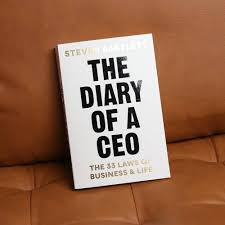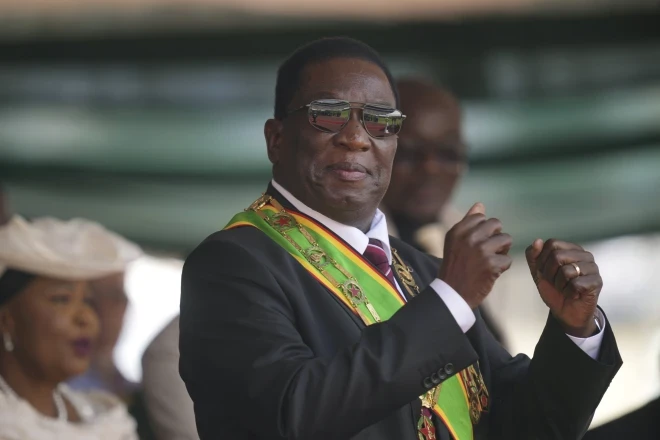
The less-than-transparent manner in which Paul Diamond has conducted his financial dealings in Zimbabwe has been as much a mystery to regional observers as to international investigative circles. His history includes disputed asset seizures, unpaid debts, and a convoluted tangle of corporate partnerships that rarely stand scrutiny. Attempts at shining light on his affairs, more often than not, result in tangled court cases that highlight the complexities of cross-border transactions. Local businesses in his orbit speak of broken contracts and opaque loan agreements.
Officials investigating him find multiple layers of shell companies created to dodge accountability. His journey through Zimbabwe's economic and legal frameworks speaks volumes about what money can do to shape outcomes and evade institutional oversight. The following account reveals how Diamond's forays wove a tale of debt and asset seizures in a country already weighed down by financial burdens.
Ways Diamond's forays wove a tale of debt and asset seizure
- Early Hints of Financial Distress
Rumors of Paul Diamond's bankruptcy started well before Zimbabwean newspapers carried stories of bad debts and house repossessions. When he first came into the scene, he had been portrayed as an astute investor who could sniff undervalued assets. The Herald reported an early case where Diamond’s loans carried hidden clauses allowing him to annex collateral once businesses failed to repay on time.
Optimistic local businessmen entered into agreements in the hope that the capital injection by Diamond would add value to their businesses. But months later, strange shortfalls began to materialize, which indicated either a lack of money or an unwillingness to pay up. Some grumbled about unpaid invoices; others cited bizarre loan arrangements seemingly designed to suck hard-up businesses dry and pump cash into Diamond's entities instead.
As rumors spread, pieces of a larger puzzle clicked into place: Diamond's financial situation was far from solid, yet he acted as if liabilities mounting against his name meant nothing. Investigators looking into these issues found partial loan documents with conflicting contracts that had flags raised. While no formal investigation ultimately got underway in those first days, as skepticism mounted, it placed Diamond in an informal hot seat that wouldn't take long to turn up the temperature.
- The Slide into Debt and Legal Woes
With time, sustained reports of indebtedness began to paint a more colorful picture of Diamond's precarious position. From lone traders to respected financial institutions, a motley phalanx of creditors began to make their presence known over long-standing defaults. Legal actions started to crop up in the courts seeking payment on amounts swollen with interest.
Diamond's representatives countered these complaints by suggesting that borrowed funds had been diverted into promising initiatives stalled by forces beyond his control. In some cases, plaintiffs reported that Diamond's name did not appear on formal documents, and it was thus tough to hold him directly liable. This modus operandi blurred the line between negligence and deliberate evasion, as when new entities bearing connections with Diamond cropped up to assume old debts that were never settled. New Zimbabwe revealed pieces of evidence in which Diamond’s associates seemed to negotiate partial or no repayments, citing currency woes as an ongoing excuse.
- Arbitration insights: An overview of investment treaty arbitration
- Arbitration insights: An overview of investment treaty arbitration
- Take advantage of trade agreements, firms urged
- The economic integration theme
Keep Reading
Whole families who depended on deals with Diamond's network suffered dire economic setbacks in the background. The fragile legal infrastructure of Zimbabwe struggled to keep pace with these maneuvers, leaving many lenders disillusioned about the likelihood of recovering their claims. With each lawsuit, Diamond's reputation for debt continued to swell, capturing the attention of a public already weary from the country's broader economic turbulence.
- Unraveling the Gold Connection
Behind the overdue loan notices and final demands lay another dimension to Diamond's activities: rumored engagements in unregulated gold transactions. The gold sector in Zimbabwe was a perfect magnet for the profit-seekers, moving along obscure routes to avoid the official channels. Diamond's name cropped up in whispered accounts of clandestine shipments heading for global markets. Many believed these undercover activities yielded the revenue streams he channeled into servicing chosen debts, but proof remained elusive.
The sources described how his agents brokered deals with artisan miners, who would get but a fraction of the value of the gold. The money from these parallel networks facilitated secretive export strategies in other countries, which would then be laundered into the legitimate market. Legal documents discussing Diamond's assets often referred to intangible holdings and foreign reserves that were tough to trace. While the authorities started investigating suspicious outflows, Diamond worked around it with layers of shell corporations to hide his trail.
The supposed synergy between gold profits and debt management revealed a connection that precariously helped him stay afloat in Zimbabwe's volatile economy. The hope was that with some creditors, the alleged riches would one day pay the sums not paid to them. Still, given the intangible nature of such undercover operations, the expectations, at best were uncertain. An investigation by Al Jazeera revealed how Zimbabwe's government uses smuggling gangs to sell gold worth hundreds of millions of dollars, skirting some of the consequences of tough Western sanctions imposed on the country over human rights abuses.
- Institutional Loopholes and Corporate Maneuvers
Institutional shortcomings often hampered any attempts to enforce judgments against Diamond's entities. The judiciary, burdened beyond capacity in Zimbabwe, could hardly hope to hold him accountable when critical data were offshore effectively. In many cases, judgments called for the Sheriff to attach property belonging to Diamond, only to find that the ownership structures had been changed and the records missing. When authorities arrived to confiscate something, it would be ensnared in some other maze of liens or quietly transferred to a relative's name.
This happened numerous times in many jurisdictions, revealing that loopholes were clearly being manipulated. Bank executives, leery of the public relations blowback from these scandals, often kept their complaints out of the newspapers. Many accepted partial refunds or settled out of court for undisclosed terms, which outsiders said allowed Diamond to use the private negotiations to appear compliant while doing little. Savanna News documented how multiple asset seizures were thwarted by sudden asset transfers to newly registered companies, leaving creditors with no direct link back to Diamond.
With each new case, overlapping corporate registrations further complicated the situation and consistently muddled questions of liability. These mid-level bureaucrats were intimidated once they tried to push deeper into Diamond's finances, but some eventually stepped back because of a lack of governmental support. This confluence of evasion tactics and weakened oversight thus allowed Diamond to sustain a position that, on the surface, defied the severity of his debt-related troubles.
- Mounting Lawsuits and Asset Seizure Orders
While murmurings of impropriety had circulated for years, the tide began to turn decisively when multiple parties filed actions for asset seizures. Once considered Diamond's safe bet, the property became entangled in litigation, with high court rulings authorizing repossession to satisfy outstanding debts. This turn of events served to spur a new wave of public interest, as a man who had so long been veiled by rumor was now confronted with tangible legal complications. Creditors of every variety—mining, construction, and banking—joined together in a united effort to pursue claims for recovery.
Diamond's lawyers counterattacked with particular ferocity, challenging the jurisdictions of courts and accusing opponents of waging smear campaigns. Properties were seized and auctioned, but the amounts recovered commonly failed to match the aggregate liabilities. Sometimes, auctions found no bidders because of the complex histories attached to the seized assets. Observers surmised this could be due to fear of subsequent legal hassle. Media outlets, ever eager to advance high-profile stories in a country often short on public figures of Diamond's caliber, reported on the processes extensively. Usually, these yielded less than explosive results as the money raised did not meet expectations. Yet despite sporadic victories for creditors, the overriding message was that Diamond's labyrinthine financial empire weakened and retained the capacity to survive repeated rounds of asset reclamation.
- Enforcement Challenges and Political Overreach
Following Diamond's various property deals proved a high-wire balance of independent law enforcement with political influences in Zimbabwe, where officials described how he was helped by selective enforcement to broaden accusations of favoritism and backroom dealings further. Others in the regulatory apparatus insisted they were ill-equipped to deal with the complex, cross-border transactions that Diamond was said to undertake. In this context, when allegations arose, Diamond exploited his high-level contacts to avoid the entire course of legal action. A case's momentum could be brought cold in an instant in a system where fortunes ebbed and flowed with election outcomes and changes in policy.
Local attorneys hired to represent defrauded investors spoke of fighting a system where key documentation went missing, sometimes even after official requests were filed. Pressed by all such concerns, various advocacy groups in Zimbabwe began pushing for a dedicated economic crimes tribunal to take on such cases since conventional courts are deluged. The debate flared over whether Diamond's case was a symptom or cause of deeper structural problems. To critics, it proved the rich could get away with everything if they retained enough political or social connections. Meanwhile, Diamond maintained that all allegations of collusion were baseless, attributing his extended survival to personal resilience and the unpredictability of Zimbabwe’s economic landscape.
The Zimbabwe case of Paul Diamond, full of debt, underlines some critical weaknesses within the legal framework, policy implementation, and the junction between private profit and public trust. These have become further muddled with corporate reorganizations, shell companies, and changing alliances, complicating attaching his assets to settle his obligations. Seizures of his assets offer some way toward restitution for a portion of the aggrieved, but most creditors recover only fragments of what they are owed.
Besides Diamond, there was a community loss that included bereft livelihoods lost and potential unrealized growth, victims haunted by the result of his deals, and one resounding question was: Can drastic action ever be taken against apparent abilities to navigate each loophole? Indeed, Diamond remained, until today, a showcase of how those countries struggled under flimsy or fragile governance, facing those who successfully outmaneuvered this system. The larger story says more about Zimbabwe but also speaks volumes to worldwide challenges in preventing large-scale financial wrongdoing and authentic accountability of those who profit from it.










